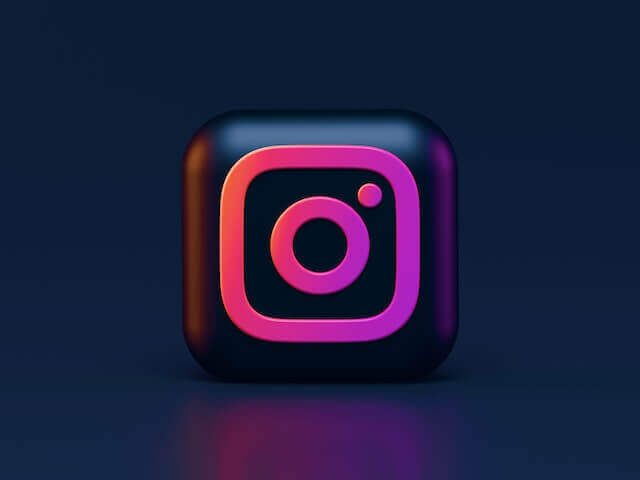Building a landing page that converts visitors into leads is vital to any digital marketing plan. However, not all landing pages are made equal, and maximizing lead generation from one demands a sophisticated knowledge of what works well and what doesn’t. To optimize landing page for lead generation may appear difficult to individuals new to digital marketing, but it can be a simple and very satisfying activity with the correct strategy.
First impressions count for potential clients, and landing pages are the entry point. The layout and content of your landing page are crucial in converting visitors into leads, whether your goal is to grow your email list, advertise a new product, or get people to sign up for a webinar. Let’s talk about the crucial actions you must take to guarantee that your landing page generates leads successfully.
1) Keep the Page Simple
Simplicity is the key factor while designing a landing page. Too much information makes the page cluttered, eventually increasing the landing page’s bounce rate rather than converting your visitors into leads. Focus on clear messaging and clean design. To make your point, use as few words as possible and ensure the page’s design draws the viewer’s attention to the most crucial components.
The landing page’s primary goal is to encourage visitors to take the necessary action, such as signing up for a newsletter, downloading a resource, or requesting a demo. Whatever the goal, the page’s design should support it without any distractions. Don’t use too many links, text, or unnecessary images to avoid diverting readers’ attention from the main call to action.
2) Visible Call to Action
The Call to Action (CTA) is the most crucial element of your landing page. It’s the action you want visitors to take, which should be impossible to miss. Whether it’s a button, a form, or a link, your CTA must be prominently displayed and visually appealing.
To make your CTA more effective, consider the following:
- Positioning: Place your CTA above the fold, meaning it should be visible without the user needing to scroll, ensuring that it’s one of the first things visitors see when they land on your page.
- Color and Contrast: Use a color that stands out against the rest of your page. The CTA should be the most visually prominent element on the page.
- Compelling Copy: The text on your CTA button should be clear and action-oriented. Phrases like “Get Started,” “Download Now,” or “Claim Your Free Trial” are direct and tell the visitor exactly what they’ll get by clicking.
3) Add Social Proof
Social proof is a powerful tool in convincing visitors that your offer is worth their time and information. People are more likely to convert when they see that others have had positive experiences with your product or service.
To incorporate social proof effectively:
- Testimonials: Include quotes from satisfied customers or clients, highlighting specific benefits they’ve experienced. Authenticity is critical, so use real names and photos where possible.
- Case Studies: If you have in-depth stories of how your product or service has helped others, summarize these on your landing page with a link to the entire case study. This adds credibility and shows the real-world application of your offer.
- Trust Badges: Display logos of well-known brands you’ve worked with, security certifications, or awards your company has won. These elements build trust and can reassure potential leads.

4) Leverage Data for Continuous Improvement
Optimizing a landing page isn’t a one-time task. Continuous improvement, informed by data, is essential to maintaining high conversion rates. You should regularly monitor your landing page’s performance and be ready to make adjustments based on what the data tells you.
Key metrics to track include:
- Conversion Rate: The percentage of visitors who complete the desired action. A low conversion rate might indicate that your CTA isn’t compelling enough or that your page is too complex.
- Bounce Rate: The percentage of visitors who leave your landing page without taking any action. A high bounce rate could suggest that your page isn’t meeting visitors’ expectations or is challenging to navigate.
- A/B Testing: Experiment with different versions of your landing page to see which performs better. You can test headlines, images, CTA placements, or color schemes. A/B testing helps you make data-driven decisions about what changes will improve your landing page’s effectiveness.

5) Engage Customers with Video Content
Video is an increasingly popular medium for engaging website visitors and can be a powerful tool on your landing page. A short, well-produced video can quickly communicate the value of your offer, demonstrate your product or service in action, and build a connection with your audience.
When adding video to your landing page, keep these tips in mind:
- Keep It Short: Aim for a video length of 1-2 minutes. Visitors are less likely to watch longer videos, and you want to convey your message quickly and efficiently.
- Focus on the Benefits: Highlight your offer’s key benefits rather than getting bogged down in technical details. The goal is to convince visitors that your solution is right for them.
- Include a CTA: Like the rest of your landing page, your video should encourage viewers to take the next step. Make sure your CTA is clear, whether it’s a clickable link at the end of the video or a verbal prompt.
6) Consider Responsive Design
In today’s mobile-first world, ensuring your landing page looks great and functions well on all devices is non-negotiable. A responsive design means that your page automatically adjusts to fit the screen size of the device it’s being viewed on, whether it’s a smartphone, tablet, or desktop computer.
Why responsive design matters:
- Improved User Experience: A landing page that doesn’t function well on mobile devices can frustrate visitors and lead to high bounce rates. Responsive design ensures that all users, regardless of their device, have a positive experience.
- Higher Conversion Rates: Visitors are more likely to convert When they can easily navigate your landing page on any device. A seamless user experience translates directly into better performance.
- SEO Benefits: Search engines like Google favor mobile-friendly websites. A responsive landing page can improve your search engine rankings, making it easier for potential leads to find you.

7) Test and Modify Regularly
No landing page is perfect; even the best designs can benefit from ongoing testing and modification. Regularly reviewing and tweaking your landing page helps you stay ahead of changing trends and visitor behaviors.
Testing ideas to consider:
- Headline Testing: Try different headlines to see which resonates most with your audience. Sometimes, a slight change in wording can lead to a significant increase in conversions.
- Form Fields: Experiment with the number of fields in your sign-up form. While more information might seem helpful, shorter forms often result in higher conversion rates because they’re quicker and easier to fill out.
- Visual Elements: Don’t underestimate the impact of images and graphics. Test different visuals to see which draws the most attention and encourage visitors to stay on the page.
Checklist to Optimize Landing Page for Lead Generation
- Write a headline in such a way that it should grab the attention of the visitors and should express a value proposition.
- The images on the landing page should be relevant to your products or services.
- The CTA should be prominent and use stabs to encourage visitors to act.
- The form on the landing page should be simple and require only the necessary information.
- The landing page should be optimized for mobile users and deliver a pleasant user experience.
- The landing page should be fast and load quickly, increasing the conversion rate.
- Implement A/B testing to improve the effectiveness of different aspects of the landing page.
Optimize Landing Page for Lead Generation
Landing page optimization for lead generation is a dynamic process that needs careful planning, execution, and adjustments. You can make a landing page that draws visitors and turns them into potential customers by emphasizing simplicity, making your call to action (CTA) highly apparent, utilizing social proof, harnessing data, keeping the design flexible, and conducting frequent testing.
In the digital age, where attention spans are short, and there is fierce competition, an optimized landing page is more important than ever. Start with these foundational strategies, and you’ll be well on your way to creating a high-converting landing page that drives your business forward.




